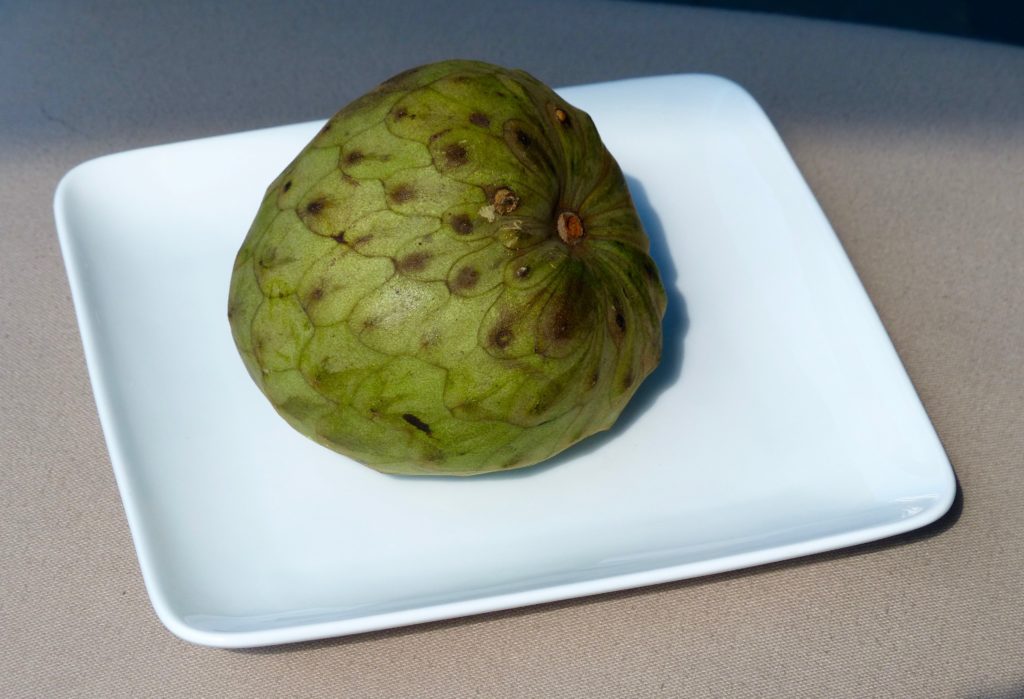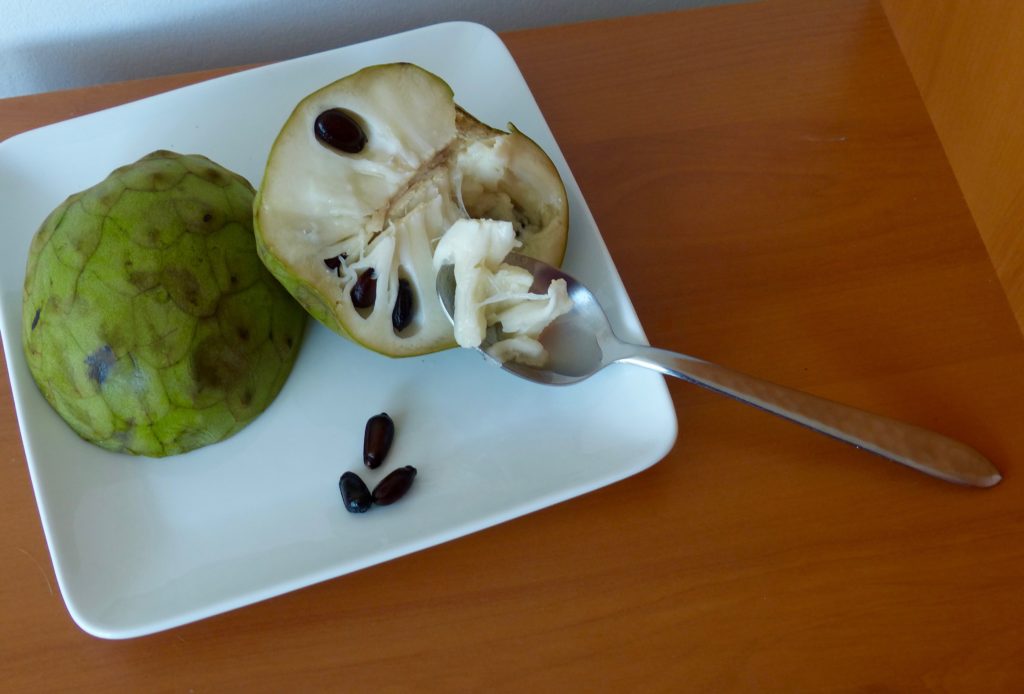As a traveller, I treasure the confusion and anticipation of encountering an unfamiliar fruit at a market or grocery store. Sometimes the fruit is simply too daunting to tackle, such as jackfruit in Thailand, which was the size of a 3-month-old baby. Sometimes the fruit lets you down, such as the popular erik in Turkey, unripe plums that left my tongue sore and my tummy upset. Sometimes the fruit represents only a minor shift from a common presence in your life, such as the tiny bananas of Laos that were far more flavorful than the oversized bunches I knew best.
But sometimes, a special fruit crosses your path – a fruit so exotic and unexpected, a fruit so well camoflaged that you nearly overlook it, a fruit that poses tantalizing questions: Does it have one pit or many? Is it juicy or dry? Should I cut it or peel it? Could something so hideous taste good?
Such was my experience recently with Chile’s ubiquitous chirimoya. I had seen it at the supermarket and even picked one up. Heavy in my hand, it felt like a lumpy softball. Green and nobbly, it intimidated me. On my next shopping excursion, I visited the chirimoya section again. I brought the mysterious fruit home and waited a few days for it to give up some of its firmness, like a ripe peach.

I cut it open and encountered large black seeds and white sections of flesh. Picking out a few seeds, I scooped a bite into my mouth. The slightly sandy texture was reminiscent of a pear, but it was smoother, creamier, like a banana. The flavor exploded with hints of strawberry, kiwi, pear, banana, pineapple … I couldn’t find a perfect comparison. It was possibly the sweetest fruit I had ever eaten, so sweet I got a sugar headache and had to pack up half for lunch the next day. It suddenly made sense that Chileans love their chirimoya juice and ice cream.

Chirimoya is called “custard apple” in English, and several websites quote Mark Twain as saying it was “the most delicious fruit known to men.” It definitely ranked up there for me, too.
